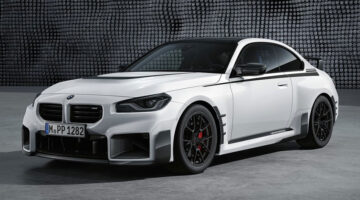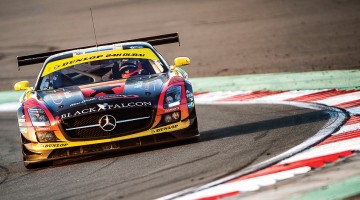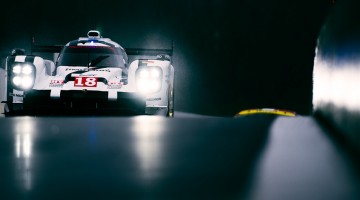Ask Jordan Butters for his take on motorsport photography, and he’ll tell you it’s all about the emotion of an event. It’s the reason he does what he does, and well too we might add. He’s certainly had enough practice in his native UK, with drifting up there with sprint and endurance racing as his favourite motorsport disciplines (one that’s currently taking him across Europe), and some of his most notable clientele including Stanceworks, Fatlace and Banzai. But what keeps him going back to the motorsport paddock, and what is it about ‘the business’ that he feels is changing? Find out as we go behind the lens with Jordan Butters.
[Not a valid template]Jordan, these are some amazing images from this year’s Britcar 24 Hours. I can only imagine how long it’s taken you to hone your skills…
“Thanks. Actually the first time I remember wanting to take better pictures was following a trip to visit family in Thailand. It was such an amazing trip and I saw so many cool sights that I wanted to do the scenery justice in the images. I was shooting using a little Canon compact and, while it taught me a lot about making the most of my kit, it also encouraged me to upgrade to my first DSLR, a Canon EOS 450D.”
But the interest in automotive and/or motorsport was already there though…
“Oh I’ve always had a love for cars and motorsport, and it was around this time that I got into drifting. I bought myself a Nissan Silvia, which I built up to a decent competition level, so naturally I started pointing my camera in its direction. Looking back now, those shots really sucked. I had a 50mm f/1.8 prime and a 10-22mm wide-angle, so everything was either shot ridiculously wide, or had a super narrow depth-of-field. I vaguely remember a regrettable spell experimenting with HDR and colour-popping too: safe to say those images are pretty well buried by now.
“I was drifting at a competitive level, but it got expensive really quickly, so I jacked it in after a couple of years. I still wanted to attend the events to socialise and the camera gave me a perfectly good reason to do so, but that meant I also needed an outlet for my images. Shortly afterwards, two friends and I built a website (www.drifted.com), and my work really started getting noticed. Up until this point photography had just been a hobby, but before I knew it I was offered a job writing and shooting for one of the UK’s biggest photography magazines.”
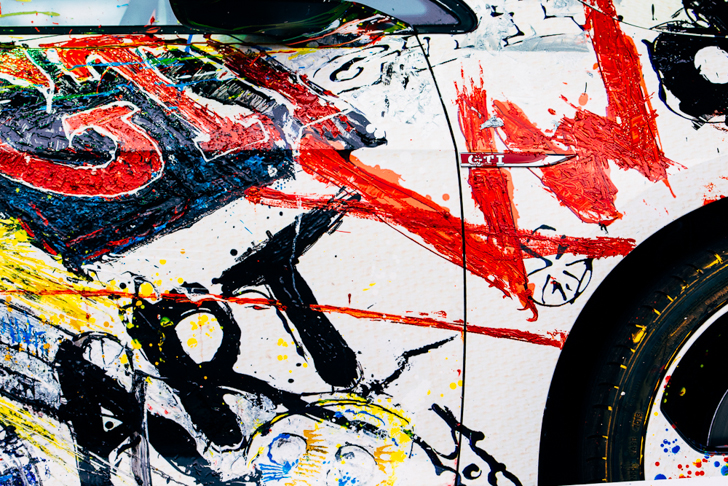
And from there the journey began. I’m guessing with the drifting background, you’re more into sprint and endurance racing rather than, say, rallying…
“Honestly, I love shooting all types of motorsport: each offers something unique. Endurance racing is great because you have the chance to shoot a single event during changing conditions and can really tell the story behind a race. Rally and drift is fun because the car is always on the edge – dirt, dust and smoke is flung around and illuminated by shafts of light. With the more professional motorsports, the drivers are used to media attention and 100 percent focused on the job at hand, which means I can do my job pretty much unnoticed. It’s quite funny, you almost need to sneak up on drivers to get a natural-looking shot: if they see you it’s all waving and thumbs-up.
“Shooting grass-roots events is very different to the higher-budget, more polished motorsports though. In grass-roots racing the driver is often also the team manager and the mechanic, and they have a lot more riding on their success. That’s when you really see emotions come into play.”
Again, given your shots from the Britcar weekend, it’s easy to see that the emotion and ‘character’ of an event is a big drawer for you…
“Oh the people and the little details are my favourite, without a shadow of a doubt. My images definitely fall more on the artistic rather than reportage side of motorsport photography: sitting in one place with a long lens freezing every car that passes isn’t for me. If I’m out on track I’m always looking for interesting backgrounds, or experimenting with light and shutter speeds. The pit lane’s always a great place for that too: there’s the drivers; the mechanics; the pit crew; the marshalls; the fans. Take the character away and I wouldn’t enjoy shooting motorsport even half as much.”
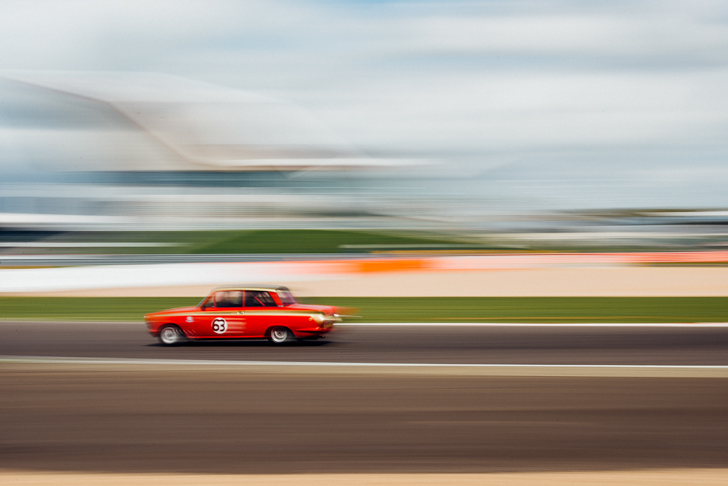
Focusing on this idea of ‘character’ then, have you ever considered the historic motorsport scene? You arguably can’t get more emotion than in this discipline…
“Put literally ANY kind of motorsport in front of me and as long as I’ve got a camera in my hand I’ll be enjoying myself – half of the fun comes from the challenge of seeing what you can produce. I still shoot a lot of drifting: it’s an exciting new form of motorsport that’s still struggling to be accepted by traditionalists, but it’s attracting a whole new generation of extreme sports fans who, in turn, are then more likely to become drawn in by more traditional racing.
“I love endurance racing too. You get to really push yourself, mentally and physically, and the resulting images are usually pretty diverse.”
Give us an idea then of what’s involved with an endurance shoot. Walk us through a ‘normal’ endurance race from a photographer’s perspective…
“I’ll always go into a race weekend with a shot list prepared. In the days leading up to the race I’ll research everything, from what’s been shot there before to who’s racing and where the light will be best at different times of the day. The more you plan, the less likely you are to be in the wrong place at the wrong time and the less time you’ll waste. I’ll draw on my experiences of the circuit if I’ve been there before, or talk to other photographers about their experience at that circuit if I’m fresh to the location. I try not to get too caught up in shooting the same angles as other people as I find that if you get in that mindset you tend to lose the ability to think on your feet. Having said that, certain circuits will have certain shots and angles that you’ve GOT to shoot at every event: corners like Karussell or Flugplatz at the Nürburgring, or looking up and/or down Eau Rouge at Spa.”
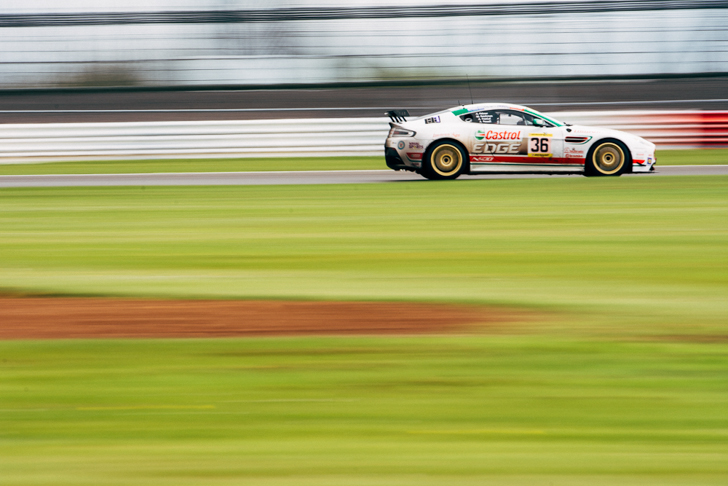
Are there any particular events you’ve shot that stand out in your memory, for good or bad reasons?
“The Nürburgring 24 Hours in 2013 really stands out. It was my first endurance race with full access, so I didn’t know what to expect, and the Ring is like a toyshop for photographers. I remember arriving the day before the race started and feeling slightly giddy at my first glimpse of that imposing catch fencing and the tell-tale red and white apex snaking off through the forest: no amount of laps on Gran Turismo can prepare you for what proper racing on the Nürburgring is like. There’s a genuine feeling of danger standing with only a thin strip of run-off and an armco barrier between the cars and yourself. It sounds horrible, but I’ve never felt so alive.
“Plus the fans at N24 are diehard and there’s an air of excitement throughout the weekend that you just can’t help but get caught up in. Sadly I was short-changed during the race, as it rained so hard that they red-flagged the event for five hours overnight.”
You say Nürburgring was your first endurance event with full access. Had you been mostly UK-based before that?
“Up until last year, yes, but I’ve now started covering more and more events in Europe. The drift scene is huge in Eastern Europe at the minute, with some insane cars being built and some real talent emerging in terms of drivers who really aren’t afraid to push past the limit. Some of my favourite events last year were drift events in Latvia and Lithuania.”
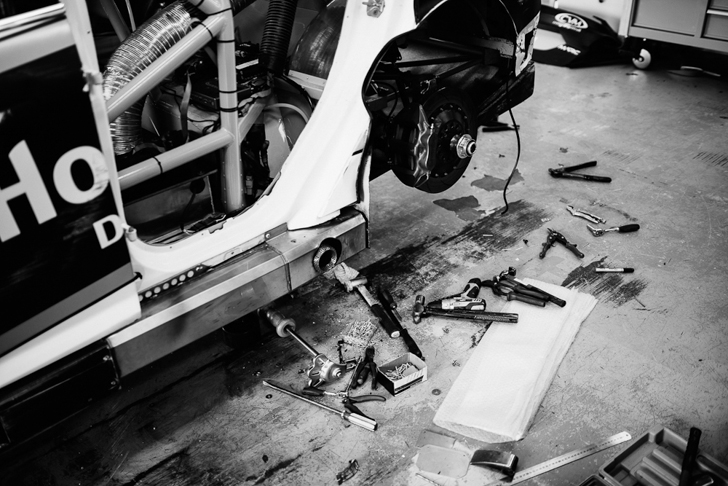
Walk us through what’s in your camera bag…
“I shoot with a Nikon D800 as my main body. My second body varies but it’s usually another full-frame Nikon, like the D750, or an APS-C model if I need the extra reach. I also carry my Fuji X100s everywhere with me – it’s a perfect pocket camera, ideal for walking around the paddock. In terms of lenses, my go-to combo is a Nikkor AF-S 70-200mm f/2.8G on one body and a Sigma 35mm f/1.4 Art on the other. I’ll hire longer primes like 300 or 400mm f/2.8s if the circuit calls for it, but most of the time I’ll go with those two lenses. For pit and people work I’ll often swap the 70-200mm for a Nikkor AF-S 85mm f/1.4 prime – combined with the 35mm on my other body I find it a nice combo that works well even in low light. I find that if I take too much stuff with me I get caught up in trying to decide which lens to use, which slows me down too much. Furthermore, being so used to using these three lenses I know my view pretty well for each one before even raising the camera to my eye.”
Bit of a left field one for you, but given the varying disciplines of motorsport you’ve shot, how do you consider motorsport photography has developed from, say, five or ten years ago?
“I’d hate to be the guy who has to deal with photographers. We’re a tough bunch to please because we want to be kept safe without the ethos of safety encroaching on our ability to create good images. At times I envy the access and vantage points that used to be available to photographers during the 70s, 80s and even early 90s, but at the same time there was a huge risk involved shooting track-side during those eras. Organisers constantly walk the fine line of keeping everyone safe yet providing the means for photographers to get the shots which do their event justice, and I fully respect them for that.
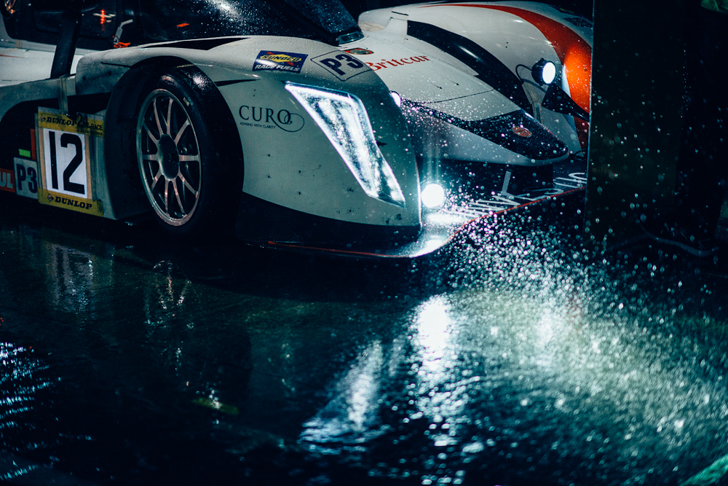
How about from a business sense? It must be difficult with some many newcomers arriving on the scene…
“ Well photography is now hugely accessible to anyone, which makes earning a living from motorsports photography tough. Images seem to hold less value today…”
Not sure we’d agree with that. It’s how crankandpiston.com got started, and ‘artistic’ photographers like yourself can create big names for themselves just by something different to the mainstream…
“Okay, maybe so, but think about it. Creating images is easier than ever before, creating good work that stands out above the rest takes time, skill and investment. Traditional print publishing is on the decline, and online publishing is re-writing the rulebook in terms of image rates. And photographers are feeling it. In a way I think that the visual nature of social media is slowly driving a positive change – drivers, teams, media outlets and sponsors are increasingly coming around to the value of good work in a bid to attract and satisfy their fans. I feel that motorsport photography, as a business, is slowly on the rise out of a dip that it’s been in for the past few years.”
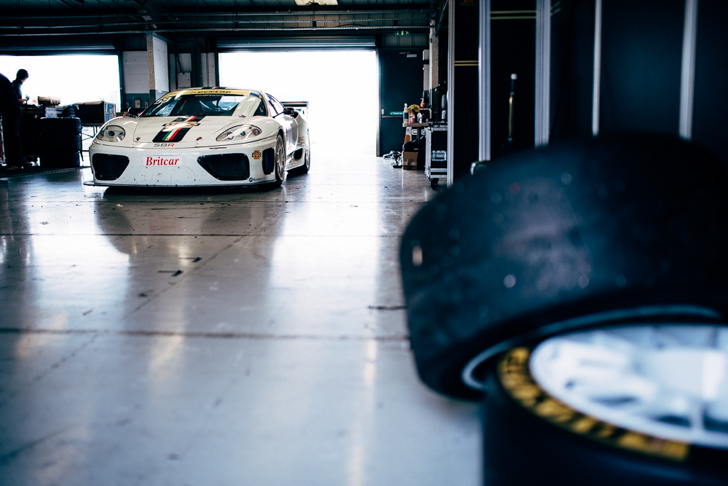
What’s on your horizon then Jordan? What’s still on your to-do list from a photography perspective?
“I’m always looking to expand my horizons. I shot rallying for the first time last year and also attended the Goodwood Festival of Speed. It really opened my eyes to historic racing, and is something I’d really like to shoot more of.
“The Middle East is really peaking my interest at the minute too. The emerging motorsport community there looks really exciting from an outsider’s point of view. I’ve never shot in the US yet either, but I hope to change that soon: there are some great circuits over there and the light is just incredible, from what I’ve seen. That’s my major bug-bare with UK motorsport: noise regulations restrict when events can be scheduled, so we rarely get to shoot racing during anything but mid-day sun or overcast gloom. I’d kill for a nice sunset during a race.”
All adds to the character of an event though, doesn’t it?
“Exactly!”

